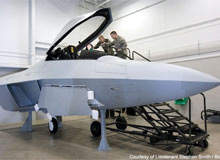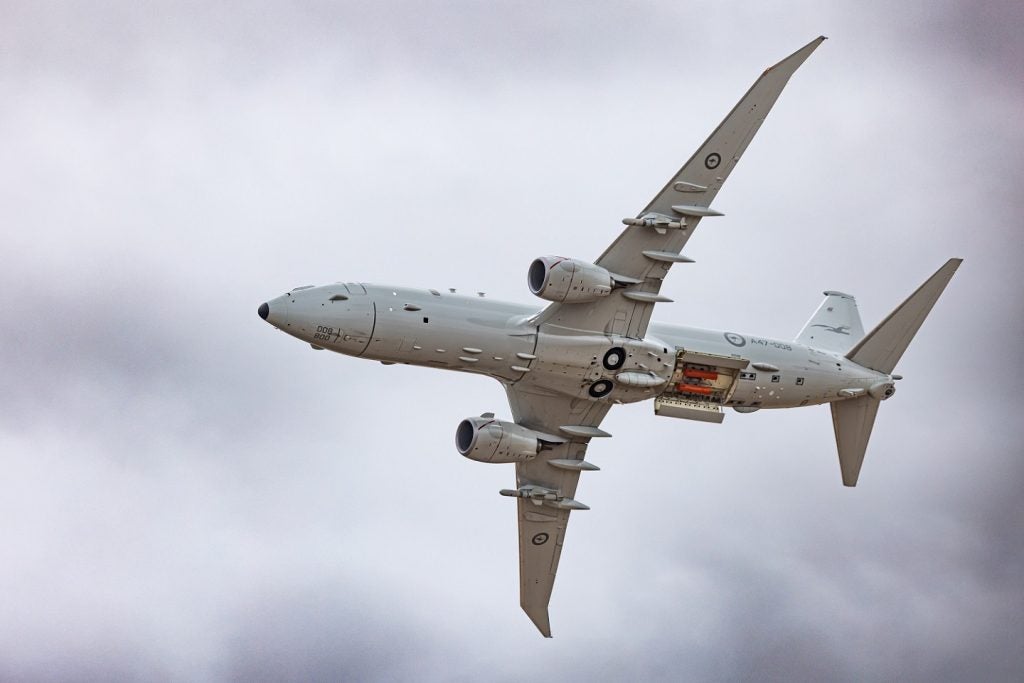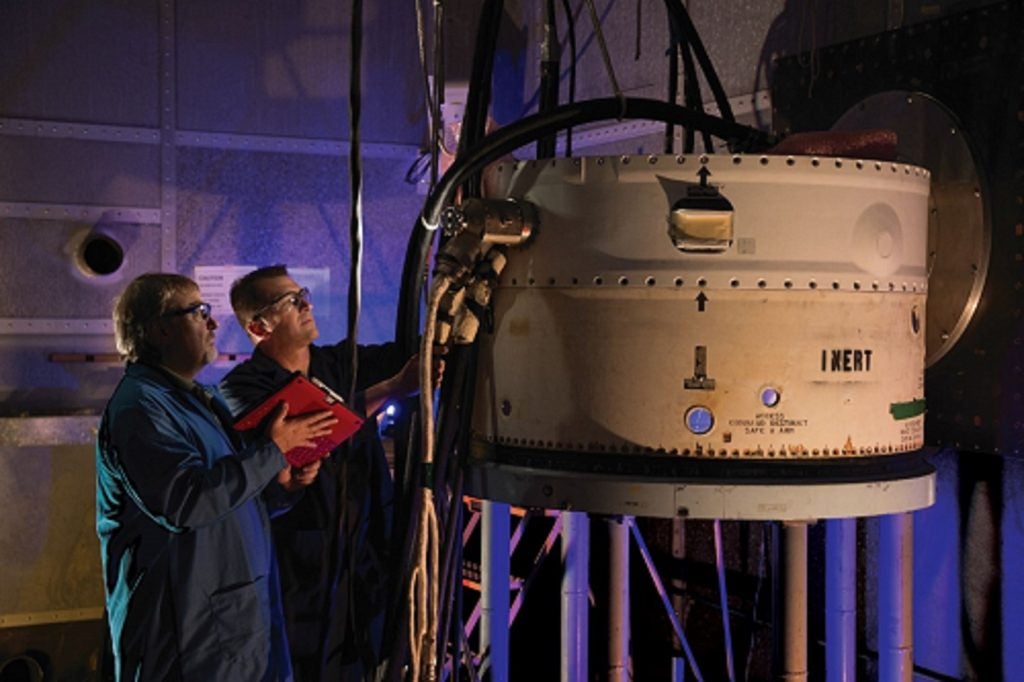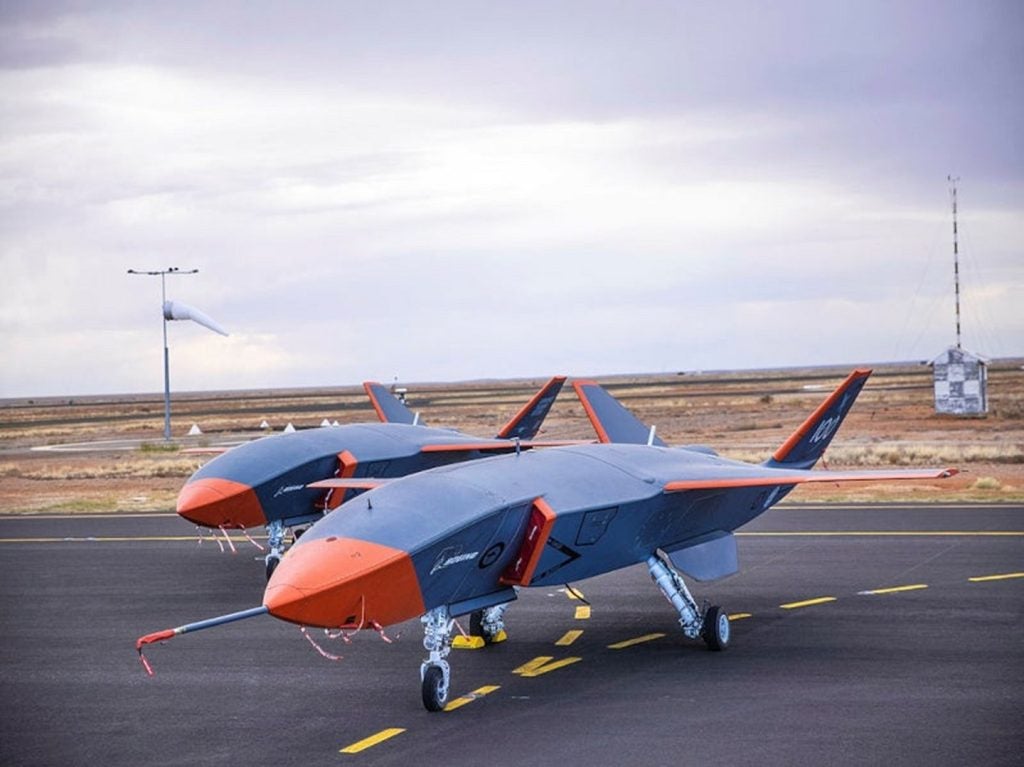
Sometimes bigger is better. The F-22 Raptor is the world’s most advanced air dominance fighter and to keep air force staff up to speed Boeing has designed a training facility that breaks the mould. Opened in January 2008, the 600-capacity schoolhouse at Sheppard Air Force Base in Texas allows ultra-realistic F-22 training to take place under one roof for the first time. And it is big. Very big.
The 119,000ft² schoolhouse is so large it has a bus stop at either end. It has 14 classrooms, each with an estimated one mile of video cabling, 17 high bays and four multi-use labs. In total, the building has over 60 miles of category-five cable, 25,000 category-five connectors and 16,000 video connectors. It took nearly 30 semi-loads of Boeing parts to kit the facility out.
So how did this enormous project, which relied on the cooperation of Boeing, the 82nd Training Wing, The US Air Force’s Air Education and Training Command and Air Combat Command customers, Raptor team-mates Lockheed Martin and Pratt & Whitney, subcontractors AAI, DME, USM, Sequoyah and AEI, the Army Corps of Engineers and the building contractor ECI Corporation get off the ground?
F-22 training systems manager Barry Cossel and the F-22 training facility site activation manager Steve Kipisz explain all.
Paul French: When did the idea for the F-22 training facility come about and whose idea was it?
See Also:
Barry Cossel: It was a joint idea. We knew that there were new aircraft coming in and we needed a new capability to deal with that. Sheppard was the logical spot as there’s already lots of basic skills maintenance training there.
How well do you really know your competitors?
Access the most comprehensive Company Profiles on the market, powered by GlobalData. Save hours of research. Gain competitive edge.

Thank you!
Your download email will arrive shortly
Not ready to buy yet? Download a free sample
We are confident about the unique quality of our Company Profiles. However, we want you to make the most beneficial decision for your business, so we offer a free sample that you can download by submitting the below form
By GlobalDataWe went and had a look to see if there were enough existing facilities to cope with the size of the potential student group and there were not, so we decided to build a new facility. Now, for the first time, all F-22 training can be done in one building.
PF: There are so many organisations working together on this, how on earth did you get the project off the ground?
Steve Kipisz: Getting 50 to 60 people to agree on things has been quite an achievement. Throughout the five-year process, at Boeing alone, we’ve had four different representatives administering the contract. I’ve been asked this question many times and all I can think of is the set of people we had working on the project.
We had one goal and we all pulled together. There were never any arguments we just got on with it. In 20 years working I’ve never seen anything like it. If I could bottle what we had, there would be a lot of people wanting to buy it.
PF: The schoolhouse took five years to plan, design and build. What were you doing for all that time?
SK: At first we had to get funding and examine the existing facilities so we could assess what we needed to build. The facility took a year to design because the site has a special problem. It is built on expanding clay so the building sometimes rises up.
The one next door to our facility can rise up to 2ft off the ground. So the schoolhouse has been built on cardboard boxes that will disintegrate and leave space for the clay to expand without affecting the building. Once we’d got the design right, construction took two years and it took a year to install the classrooms.
BC: Whilst all that was happening, there was a parallel effort going on to make sure the capabilities of the trainers would meet the needs of the programme. It was a big collaborative effort.
PF: How much input have the likes of Lockheed Martin and Pratt & Whitney had in the project? Is their involvement ongoing?
BC: The Integrated Maintenance Information System (IMIS) is a Lockheed product and they have two administrators on the base. Pratt & Whitney helped design the building. We are the three main partners on the F-22 and we all work together on this.
PF: What is the main aim of the facility?
BC: To train new recruits, who are level-three mechanics right out of school, to start basic maintenance of the F-22.
PF: How realistic is the course?
BC: The students get to use real equipment not old planes so it is very realistic in that sense. We use interactive graphics and the same databases as you’d get in the airplanes which means that, by the time they leave, the students will be able to do everything a qualified F-22 maintainer can do except the final sign-off.
PF: How do you balance realism and safety concerns at the facility?
BC: We teach as if the students are on a flight line, so they should have all the safety skills they’d need on an ordinary flight line.
SK: But we eliminate unnecessary interferences so the students are not standing on icy wings or trying to hear instructions with jet planes screaming in their ears. It is a learning environment.
PF: What sorts of things do the students learn on the course?
BC: They learn everything there is to know about the basic maintenance of the F-22, from learning what to do with the live pyrotechnics to make the cockpit safe to hooking up a laptop to the plane to run tests.
The courses vary in length but are designed to be intense – some are as short as four months – and to aid the smooth transition of the student into the field. They are always followed by on-the-job training.
PF: What are the benefits of the new training school over how training for the F-22s was handled previously?
BC: Previously we relied on conversion training – converting experienced mechanics who may have been trained on F-16s or F-15s into F-22 maintainers. No we’re getting a different cadre of people. They are fresh out of boot camp and have no previous experience.
The biggest benefit is that we’re not tying up assets to do training, which is important with a limited fleet. By using simulators instead of real aircraft, we can save money and free up an airplane to stay out on duty.
PF: How important will this facility be to the US Air Force?
BC: This is the first time this model of training has been used and we are told that this is the way the air force would like to train in the future. It is important to them, as it gives the benefits of cost savings and produces students with an ability to do the job.
PF: How does the F-22 training facility at Sheppard break the mould?
BC: It’s the first time that all F-22 training has been done all in one building. The students use the same computer-aided graphics and courseware that the maintainers will use.
We use simulators instead of real aircraft; which makes training easier.
PF: Finally, do you expect more of this collaborative type of working in the future?
BC: I think it should be the model of the future. It is amazing how easy it has been to get people working together for the common goal. We are getting more equipment delivered up until 2010 and we have more bays so we can expand if the government want to.







